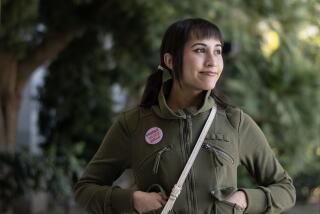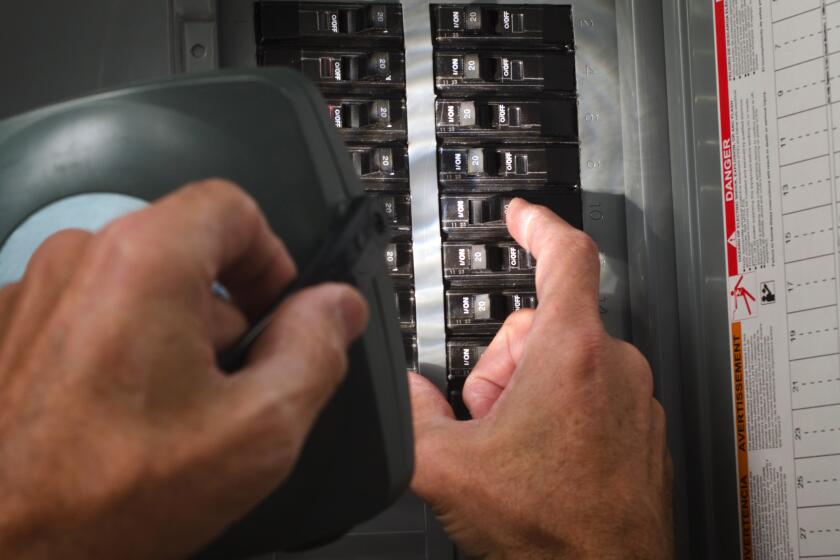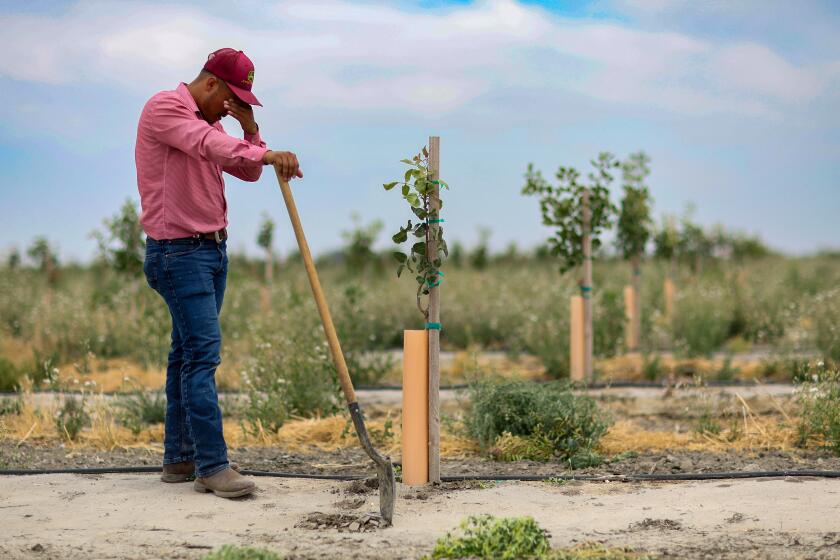Safe-4-Kids Shows Card-Carrying Concern : Caution: Bunny Samuels’ photo IDs, which many parents want but hope they’ll never have to use, can aid in the search for a missing child.
Six months ago, 4-year-old Ryan wandered away from his mother while shopping in a Northridge department store. “We were frantic. He was lost among the sea of people in the store. We were imagining the worst, that he might have been kidnaped,” his father said.
Thirty minutes later, Ryan was found on the other side of the store, sitting with a couple of older kids. Because he appeared to be with them and had taken off his jacket, Ryan was almost overlooked.
A store employee, holding an identification card with a picture and physical description of the missing child, picked out Ryan’s face in the crowd.
The Safe-4-Kids card that Ryan’s father handed over is produced by Woodland Hills photographer Bunny Samuels, who was prompted to create the cards about three years ago after the grandchild of a close friend was kidnaped.
The child was abducted by his father--Samuels’ friend’s son--during a custody battle. The grandmother and daughter-in-law had searched frantically through scrapbooks for photographs to give authorities. Many of the photos were not recent, and the child’s mother was forced to conceptualize how the child would look at the time. Several months after the kidnaping, the child was found in another state.
During the months that her friend’s grandchild was missing, Samuels, 56, developed her Safe-4-Kids cards.
Since then, Samuels has taken more than 3,000 Safe-4-Kids ID-card photos, sometimes shooting as many as 300 students at one school. The $5 charge for each card barely covers the cost of materials--Samuels earns a living through her home-based portrait photography business.
“I’ve never had to use the card--thank God--but I got it because I felt it was a good way to ensure the safety of my child,” said Pam Self, 36, who obtained cards for her 9-year-old daughter and 3-year-old son through Valley Schools in Van Nuys.
Samuels shoots photos twice a year at about half a dozen private Valley schools. She avoids public schools because she does not want to deal with the “monolithic bureaucracy” of the public-school system, she said. Cards also have been produced for several local Boy Scout and Girl Scout troops.
Samuels’ first account was Valley Schools, which had been looking for such a program in 1988.
“I had previously received information in the mail from others doing an ID card but was never struck by any of them,” said Charlotte Beatus, preschool supervisor for Valley Schools. “When I met Bunny, I was impressed. She was professional, yet her concept was very personal. I knew she would have a great rapport with the kids, and I liked how her card was structured.”
“Parents welcome something like this. They’re all for it,” Beatus said. “I knew there was interest, but I was sort of surprised from the initial response, because it was so overwhelming. We did the preschool and elementary, plus the junior high the first year, because interest was so great.”
Samuels has designed the Safe-4-Kids IDs so that each parent can carry a wallet-size card that features a recent photograph, a fingerprint and a comprehensive description of their child. If a child disappears, the card can be given to authorities to aid in their search.
The photo shoots at the schools are set up much like traditional school-portrait sessions. To ensure accuracy when the identifying information is typed in later, Samuels videotapes the sessions.
“The tape is used so, if we mistakenly put the wrong hair color down, or if we put ‘male’ when it should say ‘female,’ we can look at the tape and see what should be the correct information,” Samuels explained.
A Safe-4-Kids card was used more than a year ago to recover a missing child in the Sherman Oaks Galleria, Samuels said. Security guards used it to identify a child in the custody of two men. The preschool-age boy had become separated from his mother while shopping at a department store. The mother gave the Safe-4-Kids card to the guards, and a search began.
The guards recognized the child by the description and picture on the card, although the child had been wrapped in a blanket and the child’s face had been darkened with brown shoe polish.
“Parents like to believe that this can’t happen . . . but it can,” Samuels said. “I get that all the time.” Some parents don’t believe the card is useful, because their child is never at risk or because they already carry photos of the child in their purse or wallet.
But Self, who is also a kindergarten teacher, said, “If I was under stress, I may not be able to recall that my son weighed 37 pounds and was 35 inches tall.”
After Samuels delivers the flyers on Safe-4-Kids cards to the schools, she receives phone calls from concerned parents with questions about her background and affiliation with the school, as well as questions about the card.
Some parents feel that the card is an invasion of their privacy or fear that the card, or the elements used to make the card, will be used elsewhere. When a parent calls Samuels to get information on the process, she explains that she destroys the negatives and videotape once the cards are delivered to the school.
Then there are the parents who figure you can never be safe enough. Bob Evers, whose 3-year-old son attends one of the schools Samuels photographs, said, “I have a card for myself, my wife and each grandparent, plus my brother-in-law.”
More to Read
Sign up for Essential California
The most important California stories and recommendations in your inbox every morning.
You may occasionally receive promotional content from the Los Angeles Times.






